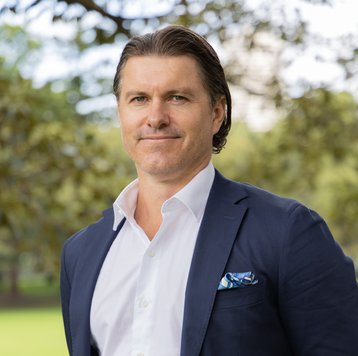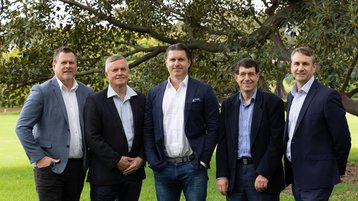At a time when traditional data center businesses are rushing to keep up with the needs of the global climate emergency, GreenSquareDC is a new type of hyperscaler with a different approach. Walt Coulston, founder, and CEO comes from a background in real estate and is now turning his expertise to creating facilities that put the environment front and center. DataCenter Dynamics caught up with him to discuss the company ethos, the challenges facing the industry, and why Western Australia is ideally positioned to be a data powerhouse.
At the heart of the GreenSquareDC ethos are five pillars of sustainability. Coulston starts by taking us through them. The first involves looking at Scope 3 – taking responsibility for carbon emissions which, while not produced by a company’s activities, can be controlled through consideration of business practices and partnerships:
“Scope 3 is going to be increasingly important as we go along. How we get there is through implementing more green building materials and building methodology. Green concrete, for example, isn't as cost prohibitive as it once was. We also look to reduce the building footprint via higher density data halls, therefore reducing embodied carbon to cope with new chipsets and CPUs, and especially GPUs that are going to be prevalent with the growth of AI.”
Second on the list, is a move to alternative cooling:
“Alternative cooling speaks to how we can achieve much lower water and power usage in our data center operations. Ultimately, we want to be water positive. It's a stretch goal, as is implementing waste heat reuse, but we believe they’re achievable. We think it's something that should be done where it can. If there's a way to end up with net zero heating and cooling in a carbon-negative environment, that’s a holy grail.”
A regular topic of conversation is the elimination of fossil fuels, which, even in the most environmentally savvy operations, still play a vital role in providing backup power. A lack of manufacturing scale and distribution of alternatives makes this less cost-effective for businesses looking at the bottom line. Coulston explains this in terms of pillar number three:
“We don't want to have diesel fossil fuels in our operations. I think the transitional fuel is HVO 100, which we're interested in, as well as later on, ideally green hydrogen and/or fuel cells, but we're not quite there yet, they need to be cost-competitive to make sense.”
For GreenSquareDC’s pillar four, we turn to the familiar topic of renewable energy. Australia is an ideal location to capitalize on a land of sun, wind, and water – not to mention space for solar arrays and microgrids:
“Renewable energy is a no-brainer, while microgrids are coming into play more and more. It's not always windy, and it's not always sunny, so to have your own on-site microgrid to not only look after your resiliency but also to help out the grid makes a lot of sense, if it's bi-directional, it's a potential profit center as well.”
The final pillar is another hot-button topic – the use of AI, or more specifically, machine learning to provide optimizations and visibility in a way that humans simply cannot match. Coulston explains:
“AI is very topical, of course, but this is more in the classic, machine learning self-learning AI, this is an overlay from an operational perspective. Google’s DeepMind AI overlay reported a 40 percent operating efficiency on the cooling side in 2016. Who knows just how efficient it could be now? AI is one of those things that can help your operation run more efficiently, increase resiliency, reduce costs, and just be a better overall business.”
Achieving the dream
So we have GreenSquareDC’s five pillars of sustainability. But does Coulston believe that they’re achievable?
“We'd rather under-promise and over-deliver, of course, and that's why I say there are some things that are still stretch goals. The waste heat redistribution – we haven't quite got that resolved the way we'd like to. But if it's not a goal, you'll never get there. We've all got to be careful of not greenwashing.”
However, there’s no doubt that these are no pipe dreams, and the effort it takes to make a green facility will pay dividends in the new realities of our rapidly warming world:
“Once you build it, it's there for a long time. If our business is future-proofed, our client's business is future-proofed – at least as far as it relates to their business with us.”
But in a world of good intentions, Coulston is also realistic that the process is a journey, not a panacea:
“One always has to remember that there is no magic silver bullet to net zero, if there was, the date that most countries set wouldn't be 2050 – it would be next year. So, you've always got to remember that, for us, it's about creating what we call a clear and present pathway to net zero. The advantage we have is that we're starting from a ground-up position.”
Location matters
The GreenSquareDC ethos brings together ideas that are familiar to those watching the transformation of the data center industry from its power-hungry past to a carbon-neutral future. The concept here is not necessarily to pioneer – but to collect best practices in one place and bake them in from the outset – which is pioneering in itself. Coulston gives an example of how the aquifer groundwater system, which sits under Perth is already being used to provide a sustainable cooling system:
“Our groundwater cooling is something that's been done by the Pawsey supercomputer, which is just down the road in Perth. It's not something you can do everywhere, but the idea is now being used at scale elsewhere in the world. If it wasn't, we would not implement it – we're not in a position to be trying to say to anyone, ‘We're new, and this is new – but trust us on this.’”
Is AI green?
One of the most talked-about areas of technology right now is, of course, artificial intelligence (AI). While generative AI, such as ChatGPT continues to grab the headlines, the progress of operational AI – machine learning – has been huge and can offer massive efficiency and safety benefits. But does Coulston think that these advantages also have a place in his green vision?
“Done the right way it reduces the element of human error, a lot of the downtime and outages that have happened in data centers are down to human error – didn't carry the two, that kind of stuff – but, with an AI overlay, you might reduce those instances.”
Once again, however, there’s a flipside. AI (in the generative AI sense) uses power – lots of it – and as it becomes commonplace in everyday life, it presents challenges for keeping a sustainable operation. The problem may also turn out to be the solution, as Coulston explains:
“The power densities to train these models are something like five times that of a traditional data center, which will struggle to handle those types of workloads. The exciting bit will be generative AI will force more sustainable solutions in data centers that provide these AI workloads. It will not only change the design of the data center, it will also likely change the location these data centers are built in, with a focus on the availability of cheap power, and ideally, cheap green power.” Places like Western Australia, which has some of the cheapest power on earth and arguably access to more renewables than anywhere on earth, will likely become a green AI data center superpower.
People matter
While automation has a large part to play in data center efficiencies, there’s another major factor in making systems work, and that’s the human factor. In recent years, as in the United States and Canada, Australia has made strides to bring equality to its First Nation citizens. We were interested to find out whether GreenSquareDC was part of this process, offering opportunities to minorities in a land where population centers are splintered. The answer is a resounding “yes”:
“I don't think you can do that soon enough. I'm not at liberty to announce anything here, but we are working on a close collaboration with a first nations group, which is fantastic. It's not just a one-off, we're trying to make sure that it's embedded throughout the lifecycle of our WA1 operation in Western Australia and elsewhere – it’s something we're really proud of.”
Offering long-term opportunities to first nation Australians is just one aspect of addressing a wider problem facing the entire global economy – even in the age of AI, data centers don’t run themselves, so recruitment is a constant quest – the quest for talent:
“It doesn't matter whether you're running a cafe or a data center – staffing is really hard, we're not immune to that. But we are finding with our approach, we’re getting plenty of reach outs, often from younger people wanting to know more. We just onboarded two smart young engineers – one of them is doing his major thesis on microgrids, so that was a great starting point. Unfortunately, staffing will continue to be hard in nearly every sector – but it's not keeping me up at night. I think we've got a nice competitive edge there.”
The holistic approach to sustainability that GreenSquareDC is offering may seem at first glance to be something of a Shangri-La, which depends on its position as a new ground-up player in an ideal location. However, as Coulston says, everything at its facilities has been demonstrated as viable across the world. Instead, it's better to see GreenSquareDC as a blueprint for the future of the sector – a glimpse into a sustainable, AI-enabled future with the flexibility to cope with the increasing demands that will be placed on the industry in the coming years.
For more information about sustainable AI-enabled data centers from GreensquareDC, go to www.GreensquareDC.com
More on GreenSquareDC
-
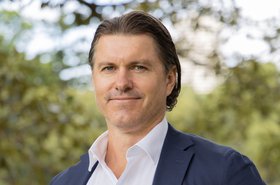
Australia’s opportunity to become a clean data superpower
As the world seeks to decarbonize, Western Australia can help meet increasing data demands while reducing emissions.
-
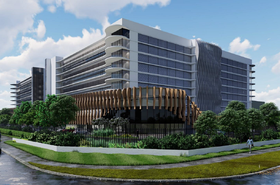
GreenSquareDC granted planning permission for 96MW data center in Perth, Australia
New company gets OK for first facility
-
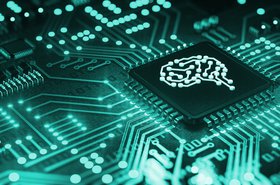
Sponsored GreenSquareDC: The future of AI-ready, ethical and sustainable data centers
Introducing the AI-ready data center helping customers achieve their decarbonization and wider ESG goals

